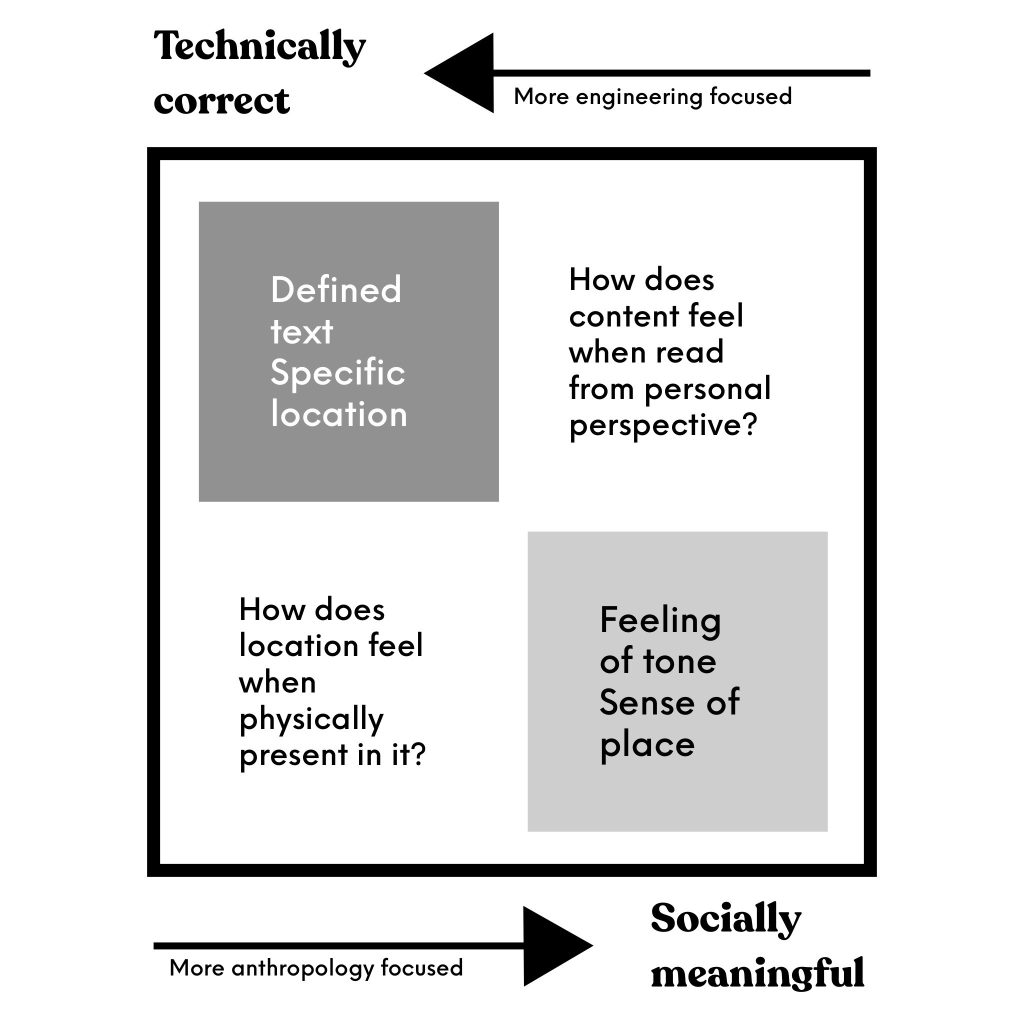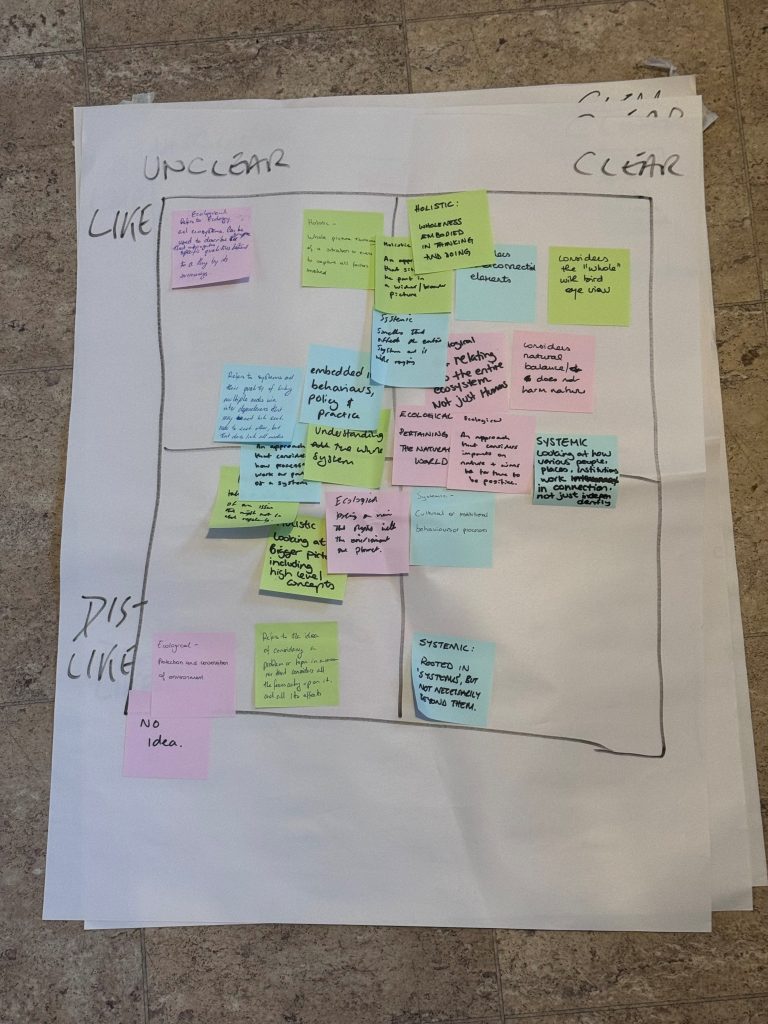
I have just started a new project with a German museum. They have sent me their strategic and visitor engagement plans in a couple of PowerPoint slidedecks. I have used Google Translate to try and understand what is being communicated in my own language of English. This machine-translation is very useful but also useless. Whilst it is brilliant engineering, it fails to translate the human and social elements of the media.
This problem is what I have tried to summarise in the diagram above.
Digitally correct, actually wrong
We have technologies that are extraordinary for digitally describing text and locations correctly. We have access to translation software and Large Language Models for text and to mapping software and Global Positioning Satellites for location. We can ‘know’ the definitions of text instantly. We can ‘know’ where we are exactly instantly. Yet that is not enough.
Words are not definitions

I help organisations understand how they perceive information. Practically this can mean understanding the defintions of words at the start of a project. Many words and ideas are dumped out of strategic plans and then presumed to be understood and to be usable by staff in creating the new product or service.
This clarity of defintion assumes that the organisation has complete control over the shared definition of words. This is very wrong.
I start a lot of projects by simply asking people to tell me what they think words mean and how they feel about them. The picture above is from a workshop on climate change and sustainability and is only looking at three common words. If organisational authority and corporate communication were straightforwardly real then there would be no issue with clarity or compliance. Yet it is always a spread because it is made of many people, from many backgrounds with differing senses of meaning and purpose.
Locations are not places

I have run walking workshops around museums and public spaces for years. What they are mostly for is to enable participants to perceive what is around them. Between sensory preferences (not wanting to notice some things) and habituation (losing thru regularity the ability to notice things), it is important to shake people up so they can sense what the place around them contains.
The picture above is from pop-up workshops I ran in the National Gallery in London. Four walks to slowly ease people thru noticing what is physically there to what is socially there. Shifting perceptions and moving people away from the idea of location to place. For example, some galleries in the museum are used for planning what to do next (rooms filled with exhausted people sitting down talking to kids about what to eat or do). Meanwhile in another room there are many neat individuals, sitting separately, attentive but waiting. This is the first date meetup room: somewhere easily found and publicly safe. Both spaces are clearly located on the maps and in the apps but their actual use and meaning is not digitally perceivable. What these locations are defined as is not what these place are.
Questions only people can answer
What this means is that digital systems and artificial intelligences may be highly capable but completely useless. They cannot know and cannot perceive the differing meanings of words and places because they lack particular aspects of Being Human. These are discoverable thru some questions.
How does content feel when read from personal perspective?
Question about definitions
As shown in the workshop activity about sustainability vocabulary, it is the sorting of meanings from personal perspectives and emotional feelings that define meanings.
You need to be someone. AI is no one.
Without a perspective, you cannot hold an opinion.
AI are endlessly confident and certain but never anchored to a perspective and thus endlessly changeable. They are no one bots in server farms floating in clouds. They cannot hold or grasp ideas because they have no bodies.
How does location feel when physically present in it?
Question about places
The no one is no where.
Without a physical presence, a body, the digital system cannot understand place. It has neither the perspective gained by being held in one location nor the visceral or emotional sense of a place that being present surrounded by objects and people provides.
The essential need for people in projects
Any project needs people. It needs people because they are the only ones who can answer these questions.
Human-centered design, user research and anthropology are essential to organisations. Diversity and divergence are crucial to strategy. AI and bots cannot perceive, let alone understand, the social meanings of words and places.
No One, No Where Bots are not the solution that organisations seems to dream of.